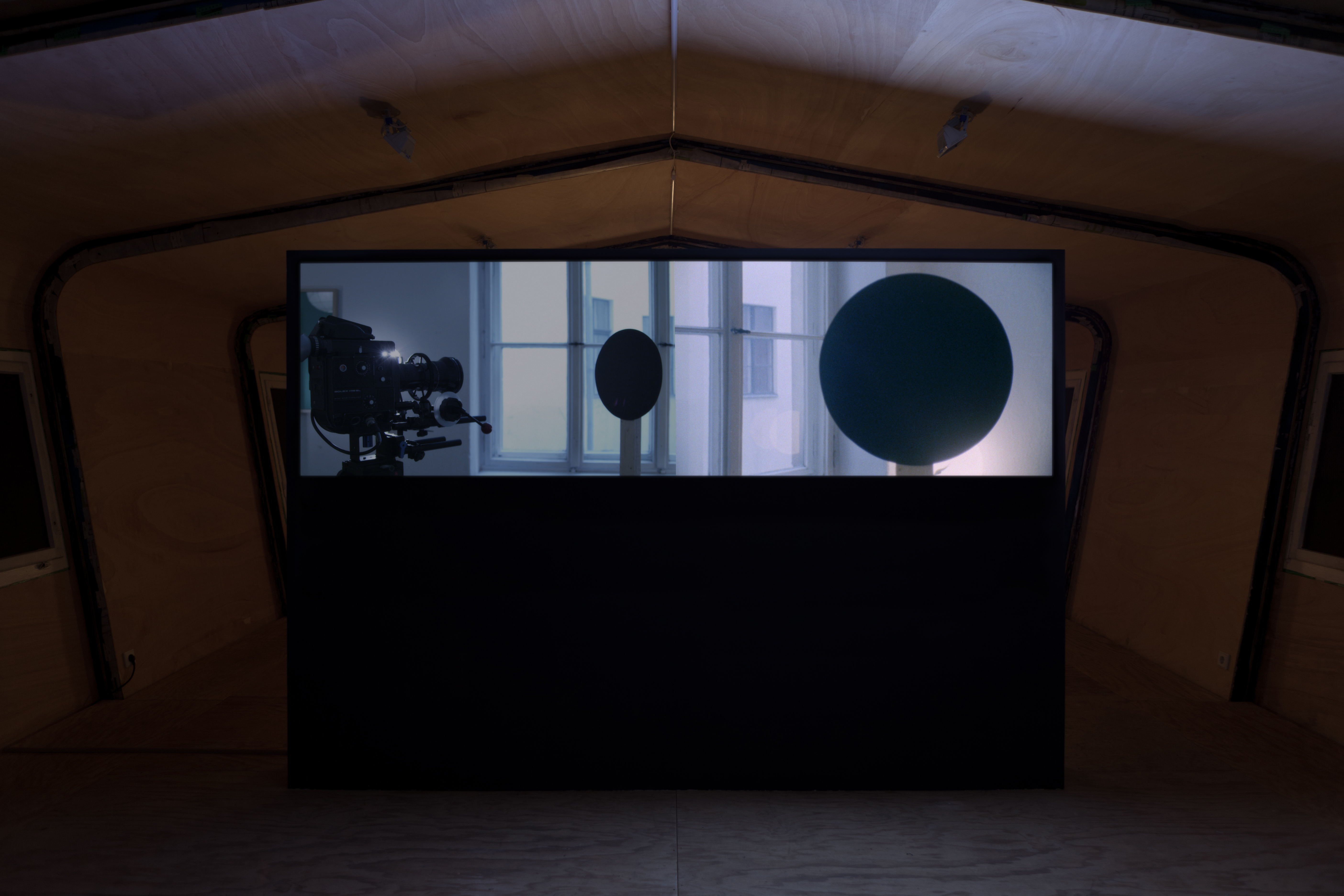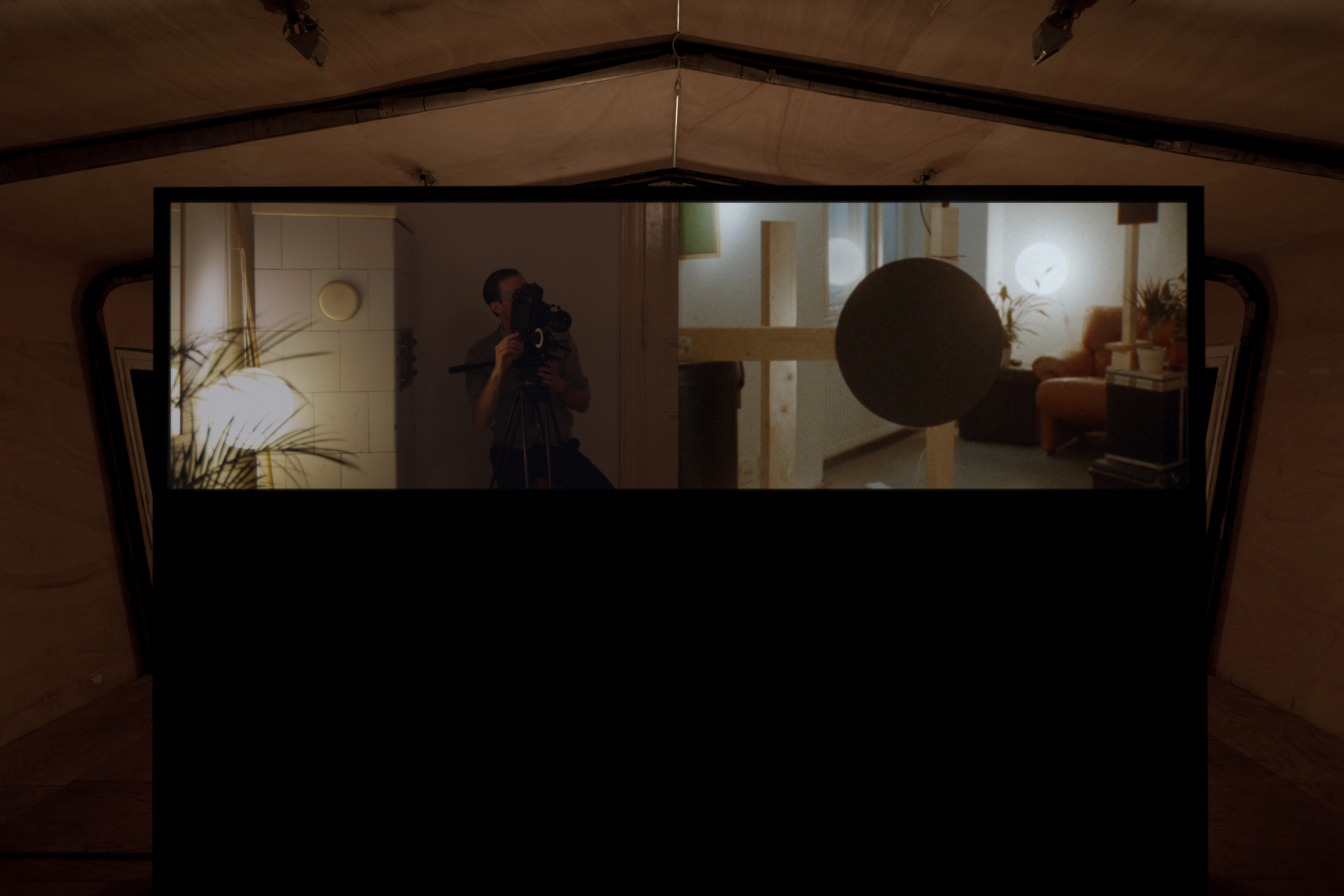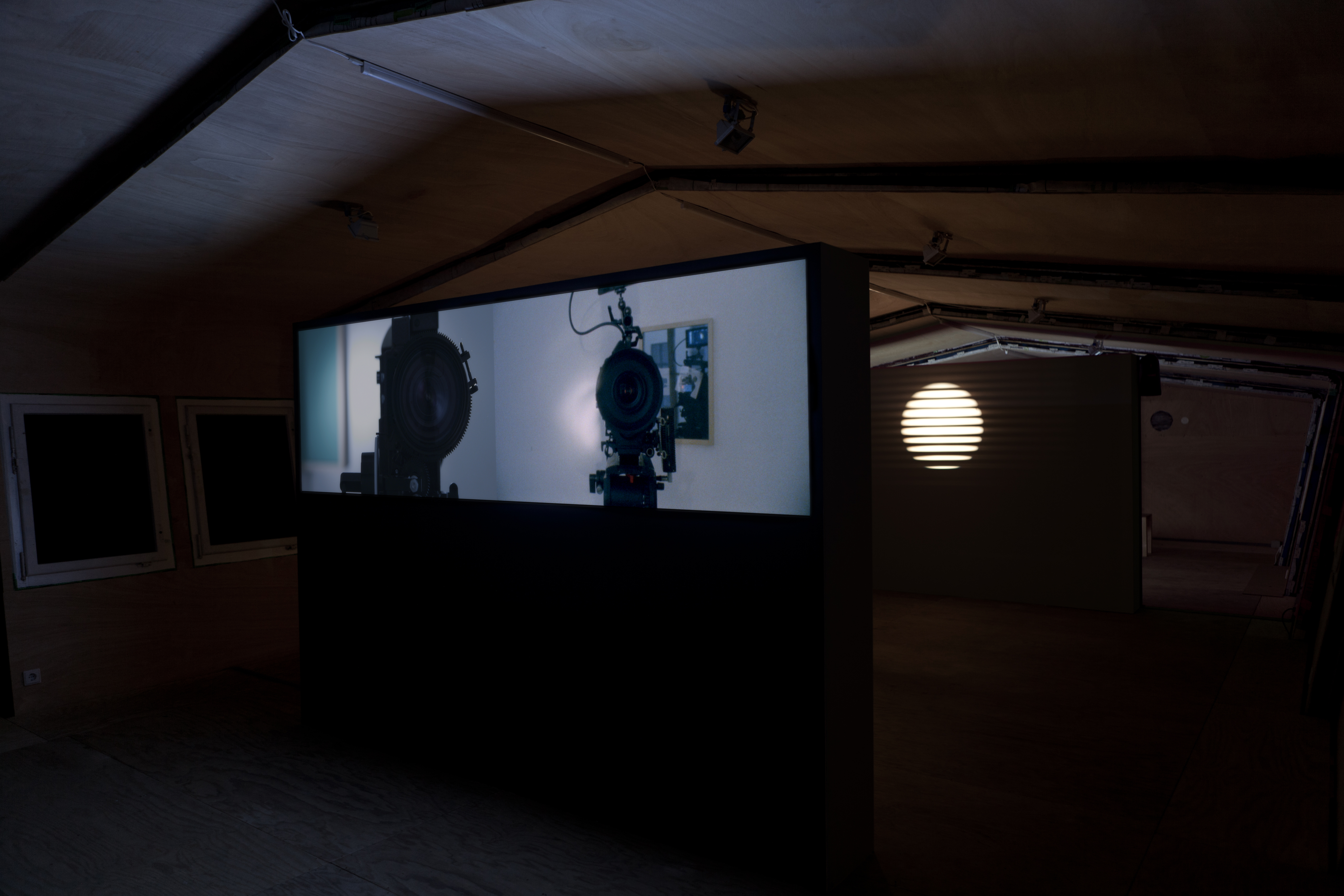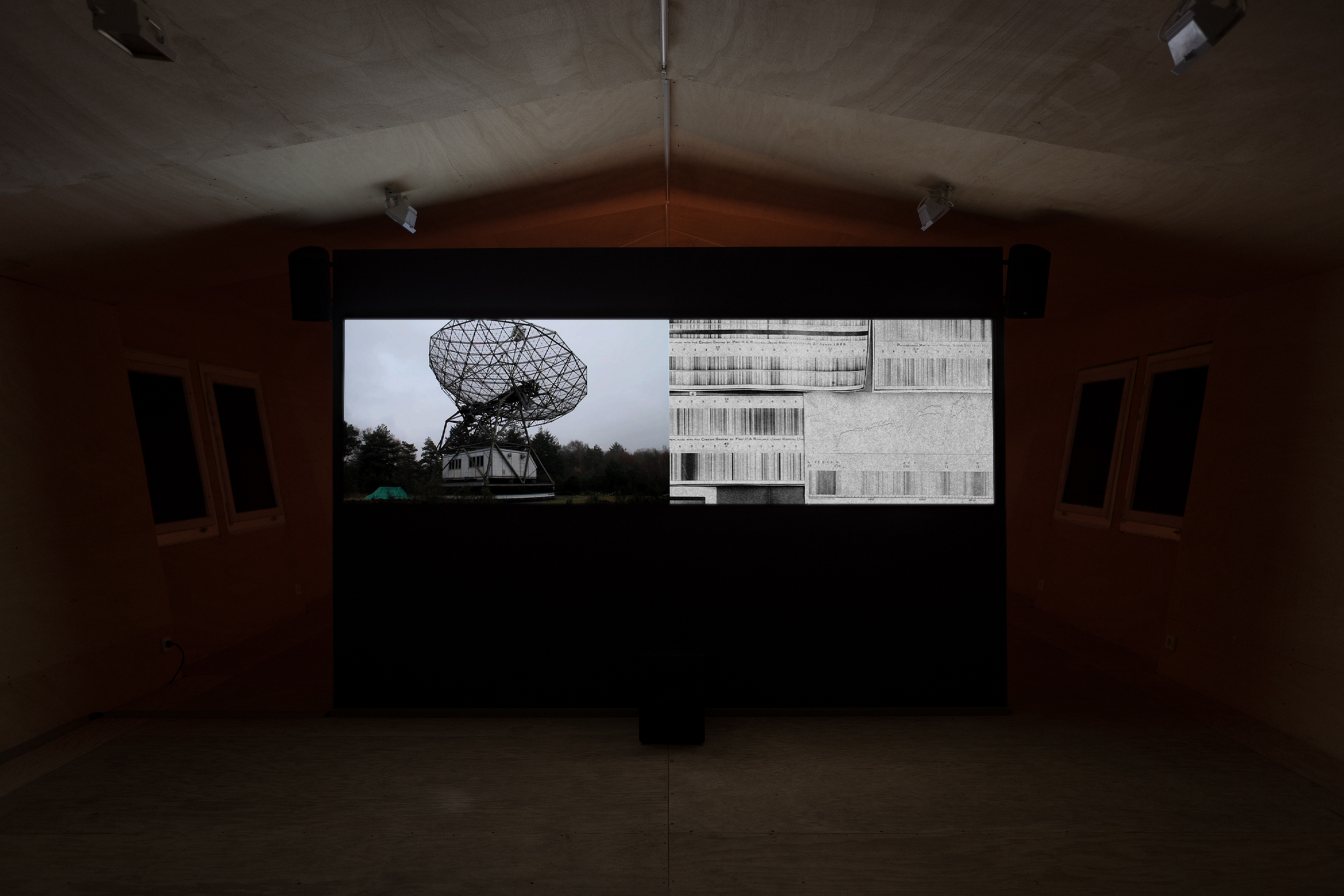OUT OF THE BLACK
Regina de Miguel, Sam Smith, Kim Westerström
Exhibition curated by Lauren Reid
13 - 27 January 2012
REH KUNST, Berlin
Exhibition curated by Lauren Reid
13 - 27 January 2012
REH KUNST, Berlin
 Regina de Miguel, Nouvelle Science, Vague Fiction Imagen Definitiva, 2011. Courtesy the artist, MAISTERRAVALBUENA and Valle Ortí
Regina de Miguel, Nouvelle Science, Vague Fiction Imagen Definitiva, 2011. Courtesy the artist, MAISTERRAVALBUENA and Valle Ortí
Echoing the unique, expanding architectural form of the building, REH KUNST becomes an imaginary telescope for the duration of Out of the black. The exhibition draws together three artists from different corners of the globe whose work provides a view into other dimensions and realities.
Visions of the universe have long caused us to wonder what is beyond our current realm of existence and to project upon the future of humankind. Conversely, when we look out into the cosmos, we are seeing the past, due to the time that it takes for the light to reach our eyes.
Telescopes therefore act as a portal to other dimensions of time and space, visually transporting us to places that we cannot see with our naked eye, let alone smell, touch, taste or hear. How do we know what is ‘real’ when it is mediated through a lens and cannot be physically experienced or inhabited by ourselves?
Dating from the mid-sixties, REH KUNST is a building first developed in the former DDR, reminding us of Germany’s recent history and of different lived experiences across time and geography. The 60s and 70s were also the times of the Space Race. In 1968, the astronauts of Apollo 8 on the first human mission to the moon described their experience of space as black and white: the moon, the stars, the endless void. When at last they saw colour, it was in fact, Earth. This was when imagination met reality, allowing human eyes for the first time to see ourselves and our place in the universe.
Out of the black reflects on this experience and the desire to bring into focus something from another realm, as a means to question the gap between our lived reality, imagined possibilities and their representation.
Visions of the universe have long caused us to wonder what is beyond our current realm of existence and to project upon the future of humankind. Conversely, when we look out into the cosmos, we are seeing the past, due to the time that it takes for the light to reach our eyes.
Telescopes therefore act as a portal to other dimensions of time and space, visually transporting us to places that we cannot see with our naked eye, let alone smell, touch, taste or hear. How do we know what is ‘real’ when it is mediated through a lens and cannot be physically experienced or inhabited by ourselves?
Dating from the mid-sixties, REH KUNST is a building first developed in the former DDR, reminding us of Germany’s recent history and of different lived experiences across time and geography. The 60s and 70s were also the times of the Space Race. In 1968, the astronauts of Apollo 8 on the first human mission to the moon described their experience of space as black and white: the moon, the stars, the endless void. When at last they saw colour, it was in fact, Earth. This was when imagination met reality, allowing human eyes for the first time to see ourselves and our place in the universe.
Out of the black reflects on this experience and the desire to bring into focus something from another realm, as a means to question the gap between our lived reality, imagined possibilities and their representation.

Sam Smith Frame, Lens 2012 (installation view), 4K video and Super 16mm film transferred to 2-channel HD video, silent, colour, 3:50min. Courtesy the artist

Sam Smith Frame, Lens 2012 (installation view), 4K video and Super 16mm film transferred to 2-channel HD video, silent, colour, 3:50min. Courtesy the artist

Out of the black (installation view) 2012

Kim Westerström, Window, projector and magnifying blinds (installation view)

Kim Westerström, Window, projector and magnifying blinds (installation view)

Regina de Miguel, Nouvelle Science, Vague Fiction 2011 (installation view). HD video and 3D animation, 21:00min. Courtesy the artist, MAISTERRAVALBUENA and Valle Ortí


 Sam Smith Frame, Lens 2012 (stills), 4K video and Super 16mm film transferred to 2-channel HD video, silent, colour, 3:50min, edition of 5 + 2AP. Courtesy the artist
Sam Smith Frame, Lens 2012 (stills), 4K video and Super 16mm film transferred to 2-channel HD video, silent, colour, 3:50min, edition of 5 + 2AP. Courtesy the artist
Sam Smith
"Let us return to one of the most fascinating of optical conflicts: the conflict between the frame of the shot and the object! The camera position, as materialisation of the conflict between organising logic of the director and the inert logic of the object, in collision, reflects the dialectic of the camera-angle." 1
Frame, Lens (2012) is a two-channel moving image work that seeks to interrogate the temporal and spatial possibilities of two cameras in one location: the relationship of lens to frame to action. Shot simultaneously on a 16mm film camera from 1975 and a contemporary digital cinema camera, the actions of the director and the movements of the apparatus explore the physical space of an interior room. The two cameras act as both capture device and subject matter, their age, mechanics, optics and recording media delivering a unique perspective to each channel.
The room within the film becomes a space to explore cinematic language reduced to its most basic, that of composition and montage. The director operates the action from within the frame, while controlling the tension between the camera-object and the camera-angle. Frame, Lens sets up a reflexive loop where the role of each device is reversed on the opposing screen. The circular forms of each lens appear in compositional contrast to the rectangular frames of the screens. This geometry is doubled within the set: a black circle and a black rectangle in the 16:9 ratio of an image frame.
1. Sergei Eisenstein (1949) The Cinematographic Principle and the Ideogram (Jay Leyda, trans.) In Film Form: Essays in Film Theory (p40) Harcourt Inc.

 Kim Westerström, Window, projector and magnifying blinds (installation view), 2010, window with blinds, projector and magnifying glass, dimensions variable, edition of 3 + 1AP, courtesy the artist
Kim Westerström, Window, projector and magnifying blinds (installation view), 2010, window with blinds, projector and magnifying glass, dimensions variable, edition of 3 + 1AP, courtesy the artist
Kim Westerström
In the work Window, projector and magnifying blinds (2010) three different found objects, each connected to seeing, are assembled together to form a whole: a super-8 projector, a magnifying glass and a discarded window with blinds. The installation consists of two parts: one that is concrete, consisting of the three familiar objects; and one that is activated when the three objects work together, projected and reflected circles of light.
When the distance between the objects is correct, three circles of light occur in the room. One circle falls directly onto the window, one is filtered through the blinds onto the facing wall and one is cast onto the wall behind, reflected from the window. The circles of light give the illusion of a moon suspended in the sky.



Regina de Miguel, Nouvelle Science, Vague Fiction 2011 (stills). HD video and 3D animation, 21:00min. Courtesy the artist, MAISTERRAVALBUENA and Valle Ortí
Regina de Miguel
Nouvelle Science Vague Fiction (2011) explores the connections between scientific analysis, perception and consciousness. De Miguel employs scientific research and science fiction to create virtual or psychological spaces. These spaces allow us to modify our conception of reality and to be aware of our trained consciousness.
The first channel goes into the depths of a cave and the surface of a lake that exists above. This is Lake Cerknica in Slovenia, which mysteriously appears and disappears throughout the year. The earth itself can be considered an interface between two different realms, one that exists above and one that exists below the surface.
The film then takes us to the Dwingeloo Radio Telescope in the Netherlands, which is devoted to studying the most distant and invisible objects in outer space. These outer-reaches of the universe can currently only be mapped in the form of sound waves as they are too distant to experience or measure.
The sound of black hole deposits, which were initially recorded by the astronomy station have been composed in the soundtrack by Jonathan Saldanha then pressed onto vinyl. Black and white micro-images of the vinyl’s surface, scanned using an electron microscope, appear as foreign landscapes composed of ridges, summits and arid deserts, similar to space photography of lunar or planetary surfaces.
These images are displayed in the second channel amongst a repository of scientific images located in a virtual recreation of the abandoned Solaris spacecraft from the 1972 film of the same name. The use of science fiction highlights the historical specificity of technology and knowledge. The research documents of endless measurements and diagrams seem to contain answers to existence, time and space. Removed from context and translation they appear meaningless and futile, particularly in contrast to the sublime landscape in the first channel.
The piece is drawn together by musings on different ends of the world, written by De Miguel and from the novel El Fondo del cielo by Rodrigo Fresán. The detached tone of the ‘super observer’ raises the question of what the meaning of the end may be and will it matter if no one is there to see it?
